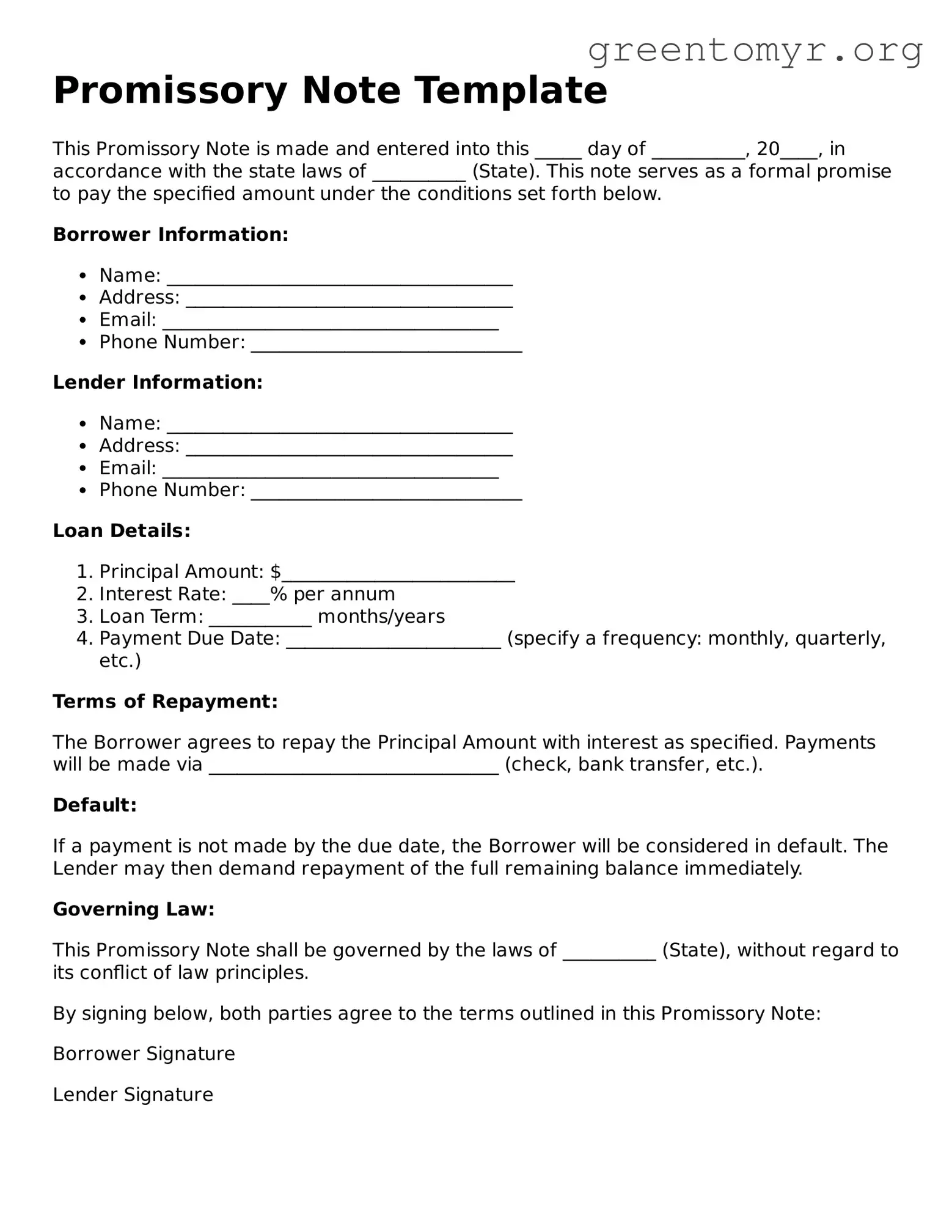Promissory Note Template
This Promissory Note is made and entered into this _____ day of __________, 20____, in accordance with the state laws of __________ (State). This note serves as a formal promise to pay the specified amount under the conditions set forth below.
Borrower Information:
- Name: _____________________________________
- Address: ___________________________________
- Email: ____________________________________
- Phone Number: _____________________________
Lender Information:
- Name: _____________________________________
- Address: ___________________________________
- Email: ____________________________________
- Phone Number: _____________________________
Loan Details:
- Principal Amount: $_________________________
- Interest Rate: ____% per annum
- Loan Term: ___________ months/years
- Payment Due Date: _______________________ (specify a frequency: monthly, quarterly, etc.)
Terms of Repayment:
The Borrower agrees to repay the Principal Amount with interest as specified. Payments will be made via _______________________________ (check, bank transfer, etc.).
Default:
If a payment is not made by the due date, the Borrower will be considered in default. The Lender may then demand repayment of the full remaining balance immediately.
Governing Law:
This Promissory Note shall be governed by the laws of __________ (State), without regard to its conflict of law principles.
By signing below, both parties agree to the terms outlined in this Promissory Note:
Borrower Signature
Lender Signature
